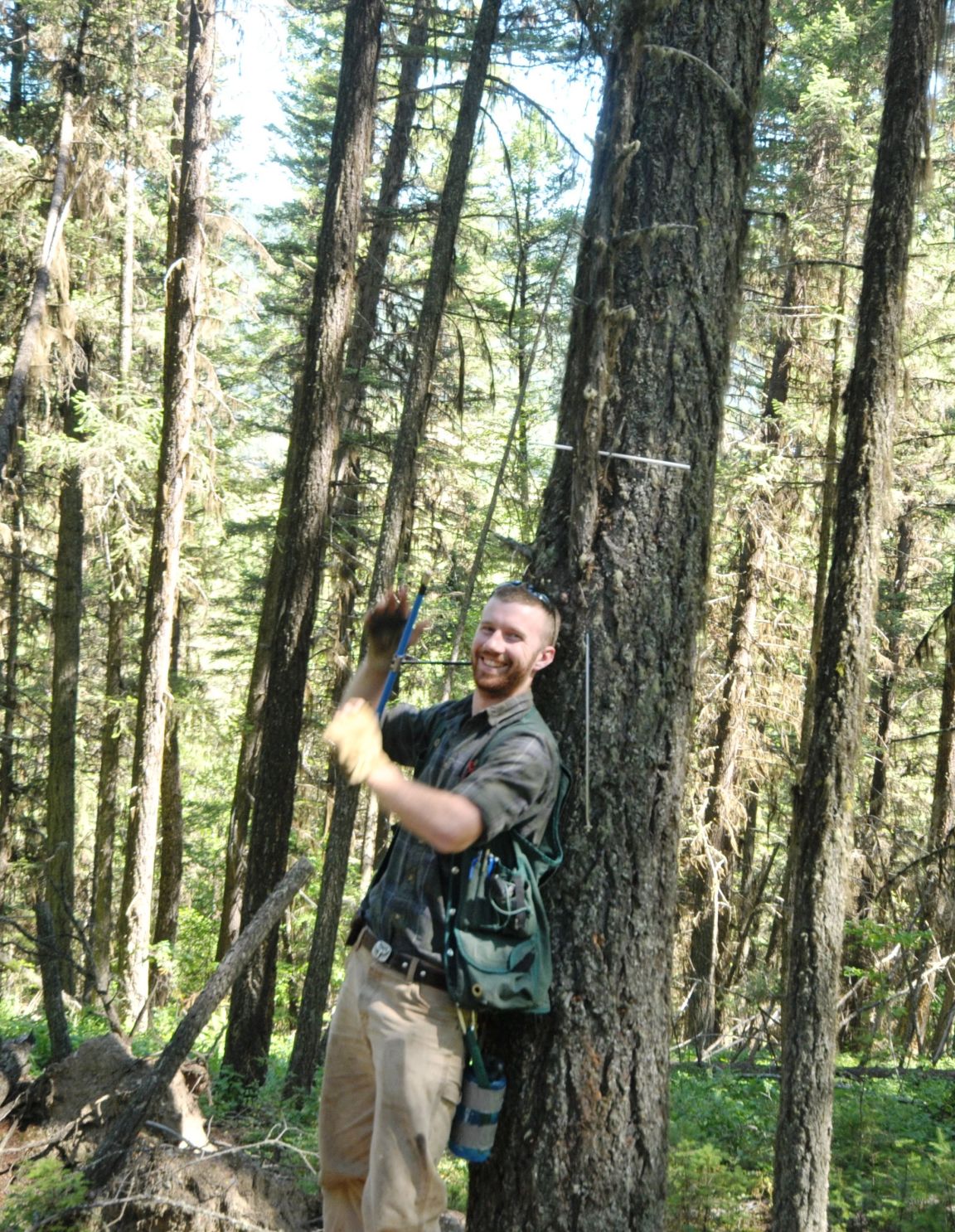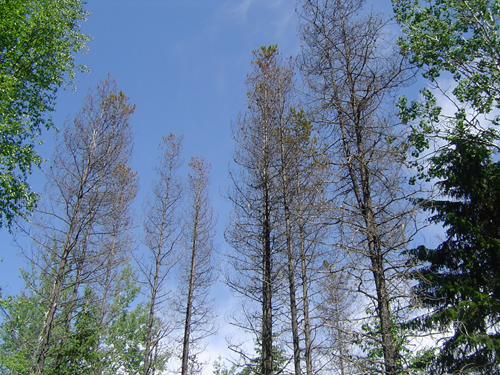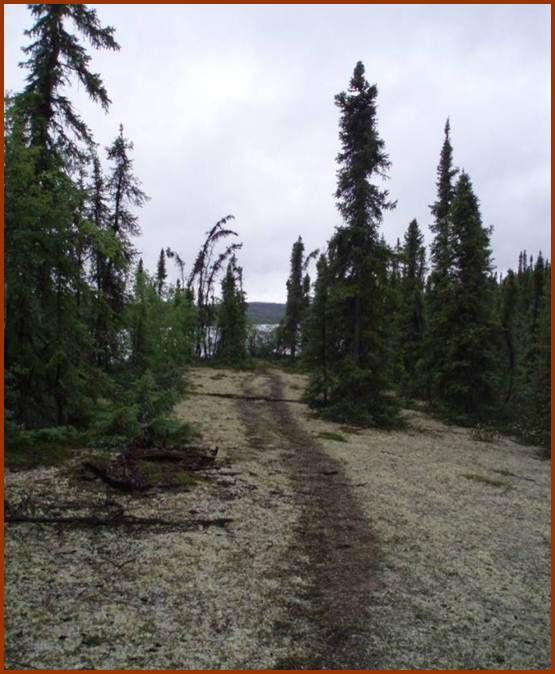Current Projects
Outbreak dynamics and spatial relationship between western spruce budworm and Douglas-fir beetle in the northern Chilcotin region. (Neil Thompson, PhD Candidate)
Douglas-fir beetle (DFB) is a native insect that infests Douglas-fir throughout much of its range in Canada, the United States, and Mexico. Douglas-fir and DFB reach their northernmost distributions in central British Columbia, providing a unique opportunity to study the ecology of the host/pest system. Douglas-fir beetle preferentially attacks trees that have been weakened by drought, fire, windthrow, root rot, competition, or, it has been suggested, defoliation by western spruce budworm (WSB). The objective of this study is to describe and quantify historic outbreaks of Douglas-fir beetle and the interactions between DFB infestation and predisposing factors including WSB defoliation. Periods of growth suppression, release events, and scars left by failed beetle attacks are being identified in a 250-year tree ring record. These reconstructions will be used to quantify and explain changes in outbreak dynamics of both DFB and WSB over time, and project future impacts and potential mitigation strategies.

Investigation of intra-species variation in lodgepole pine secondary metabolite synthesis as a defense against Dothistroma septosporum. (Tim Owen, PhD Candidate)
This project aims to test if variation in transcript abundance of monoterpene synthases contributes to variation in monoterpene synthesis between Pinus contorta provenances, and to correlate this with disease history. An improved knowledge of the molecular basis for Dothistroma resistance will aid in the development of resistant varieties, and correlation with disease history determined using tree ring analysis, will improve prediction of future outbreaks in a changing climate.

Fire regime and forage lichen availability for the Bathurst caribou herd, NWT.
This study investigates the underlying ecological processes of forage lichen dynamics on the winter range of the Bathurst caribou herd, and interactions with climate change and fire disturbance. The historical impacts of fire-climate interactions on lichen succession in the wintering range will be quantified through reconstruction of fire history over approximately 300 years. The study will contribute to prediction of fire-climate change interactions and the subsequent influence on caribou wintering habitat, especially on lichen succession.
